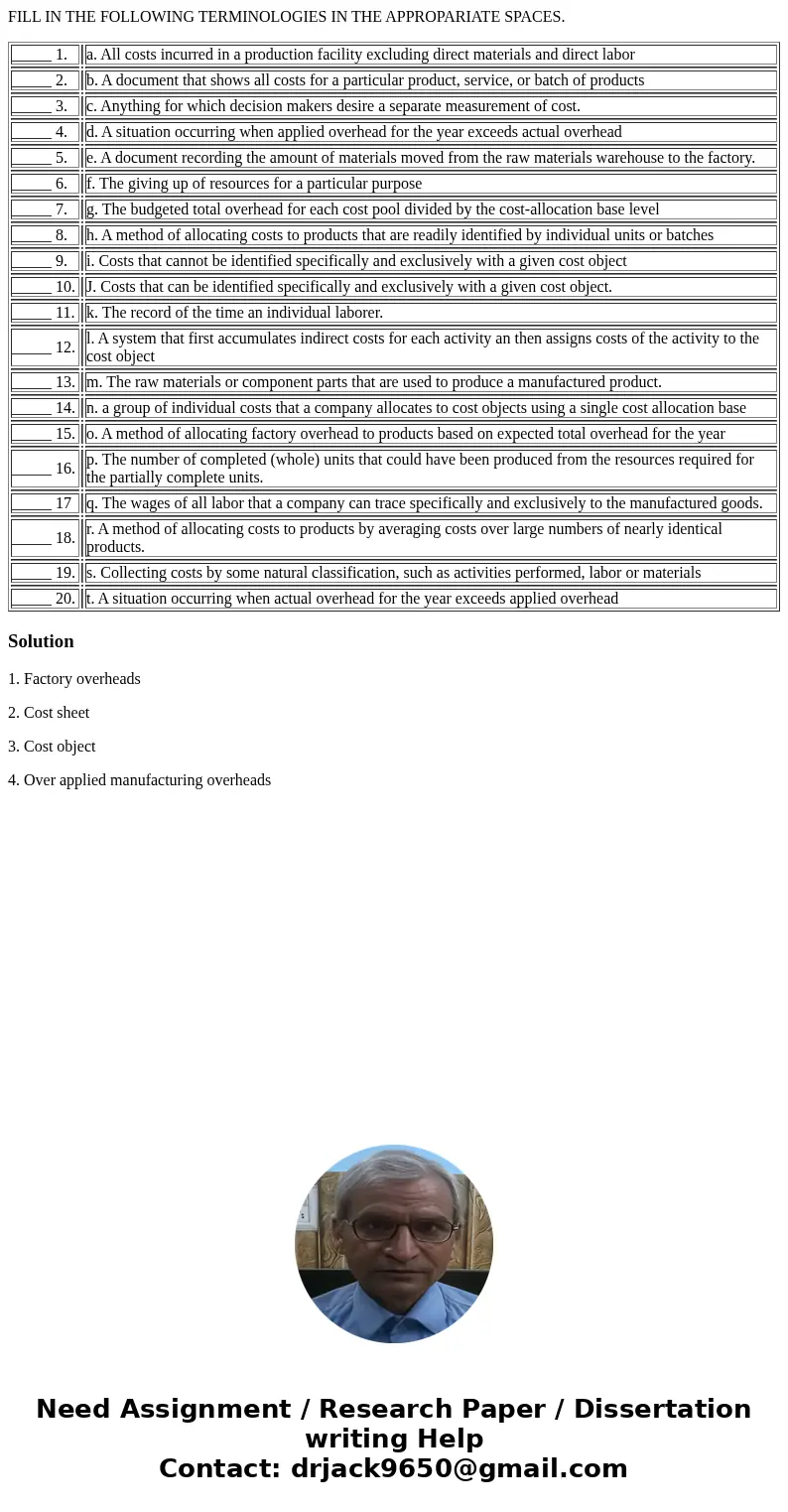FILL IN THE FOLLOWING TERMINOLOGIES IN THE APPROPARIATE SPAC
FILL IN THE FOLLOWING TERMINOLOGIES IN THE APPROPARIATE SPACES.
| _____ 1. | a. All costs incurred in a production facility excluding direct materials and direct labor | |
| _____ 2. | b. A document that shows all costs for a particular product, service, or batch of products | |
| _____ 3. | c. Anything for which decision makers desire a separate measurement of cost. | |
| _____ 4. | d. A situation occurring when applied overhead for the year exceeds actual overhead | |
| _____ 5. | e. A document recording the amount of materials moved from the raw materials warehouse to the factory. | |
| _____ 6. | f. The giving up of resources for a particular purpose | |
| _____ 7. | g. The budgeted total overhead for each cost pool divided by the cost-allocation base level | |
| _____ 8. | h. A method of allocating costs to products that are readily identified by individual units or batches | |
| _____ 9. | i. Costs that cannot be identified specifically and exclusively with a given cost object | |
| _____ 10. | J. Costs that can be identified specifically and exclusively with a given cost object. | |
| _____ 11. | k. The record of the time an individual laborer. | |
| _____ 12. | l. A system that first accumulates indirect costs for each activity an then assigns costs of the activity to the cost object | |
| _____ 13. | m. The raw materials or component parts that are used to produce a manufactured product. | |
| _____ 14. | n. a group of individual costs that a company allocates to cost objects using a single cost allocation base | |
| _____ 15. | o. A method of allocating factory overhead to products based on expected total overhead for the year | |
| _____ 16. | p. The number of completed (whole) units that could have been produced from the resources required for the partially complete units. | |
| _____ 17 | q. The wages of all labor that a company can trace specifically and exclusively to the manufactured goods. | |
| _____ 18. | r. A method of allocating costs to products by averaging costs over large numbers of nearly identical products. | |
| _____ 19. | s. Collecting costs by some natural classification, such as activities performed, labor or materials | |
| _____ 20. | t. A situation occurring when actual overhead for the year exceeds applied overhead |
Solution
1. Factory overheads
2. Cost sheet
3. Cost object
4. Over applied manufacturing overheads

 Homework Sourse
Homework Sourse